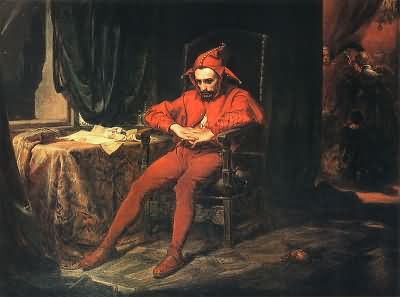
The Various Representations of the Fool in Art

# Saints, Sinners, Lovers, and Fools: A Dive into Flemish Masterworks
### Exploring Flemish Art and the Roles of Fools in Society
MONTREAL — The folly of man takes a starring role in the Montreal Museum of Fine Arts’ captivating exhibition, *Saints, Sinners, Lovers and Fools: Three Hundred Years of Flemish Masterworks*. While the title may first call attention to saints, it is the fool’s presence — its multifaceted guises and historical significance — that resonates the most in today’s often nonsensical global landscape. Curated by Chloé Pelletier, the exhibition offers a window into Flemish art between 1400 and 1700, shedding light on societal tensions and learning moments that bear eerie relevance to our modern age.
Drawing from the prestigious collection of the Phoebus Foundation based in Belgium, this brilliant array of works is amplified by contributions from Montreal and a meticulously curated thematic journey through various epochs and subject matter in Flemish painting.
As we scour these centuries-old works, what becomes clear is that the fool, whether a literal court jester in bright garb or a common man yielding to self-destructive tendencies, holds up an unsettling mirror to humanity’s enduring folly.
### Who is the Fool?
What does it mean to be a fool? Often characterized by playful irreverence, the fool’s role in society is multi-layered. The English term *fool* and the French synonymous *fou* derive from the Latin *follis*, an empty, inflatable bag — an apt metaphor for one who is filled with “hot air” or arrogance without substance. Conversely, the Dutch name for a fool, *geck*, offers a more duplicitous definition, pulling from the verb *gekken*, which means to deceive or mock.
Flemish masters frequently depicted the fool as the clown at the royal court, offering banter and comic relief to exalted rulers. However, these figures, both literal and metaphorical, pervade Flemish imagery in subtle and potent ways, from representations of sin and vice to critiques of worldly desires and the transient nature of material success.
One pivotal piece featured in this exhibition is Jan Massys’ 1530 painting *Riddle: The World Feeds Many Fools*. In it, we see two young men sporting jester hats — symbols that call to mind the myth of donkeys, wrongly associated with stupidity. Massys frames this imagery with a clever rebus, forming an aphorism: “The world feeds many fools.” Indeed, it suggests the profound notion that man’s downfall rarely comes from external forces but from his own inability to temper excesses and learn from common mistakes.
### Fools at Court: The Royal Jester
Perhaps the most fascinating fool on display is in Jan Sanders van Hemessen’s *Portrait of Elisabeth, Court Fool of Anne of Hungary* (1525). While the image of jesters is often male-dominated, this striking painting of a female fool — particularly one of advanced age — upends traditional expectations. Elisabeth, who entertained Queen Anne of Hungary for years, is seen confidently wearing the jester’s distinctive hat. Although little is known about her biography, her presence here offers a revisionist history of jesters, illustrating that women, too, could hold powerful and subversive roles in entertainment and royal courts.
But the role of the fool serves not only to entertain but to challenge power in a vulnerable guise. From a modern perspective, this portrait speaks volumes about gender, wit, and freedom of expression, placing immense importance on the fool’s ability to deliver uncomfortable truths through the guise of humor.
### Everyday Follies: Genre Paintings and the Consequences of Vice
Flemish art often sought to moralize folly through detailed “genre paintings” that depicted everyday life as a series of cautionary tales. One of the show’s stars is Frans Verbeeck’s *Mocking of Human Follies* (1550). The painting, grand in both scale and content, is a labyrinth of vignettes that each document moments of human excess, indulgence, and buffoonery. From drunkards spilling out of taverns to nuns engaging in lewd behavior, the image seems to revel in humanity’s chaotic surrender to temptation.
At the center of the work is a devil — puppeteer of all human frailties — removing a pair of spectacles from an owl, while preparing to ride the bewildered bird. Such scenes link foolish acts directly to diabolic influence, combining comedy with an element of fear — a vein of satire that feels timeless.
### From Globalization to War: A Broader Narrative of Human Folly
Beyond the literal fool, Flemish works from the 16th and 17th centuries illustrate the larger metaphorical folly of humanity: greed, war, and vice. Paintings of scheming tax collectors, glorification of wealth